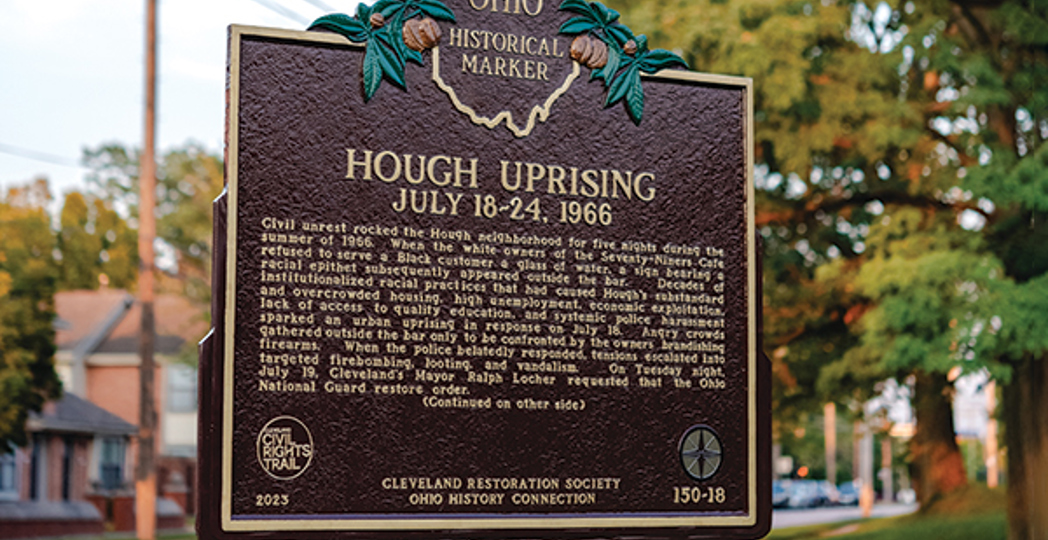Hough’s Civil Rights History Honored with New Trail Marker
by Jala Forest | Sep. 6, 2024 | 5:30 PM

Kaitlin Walsh
On the corner of East 79th St. and Hough Ave., a crowd of community leaders and neighborhood residents gathered to celebrate the unveiling of the Hough Uprising Trail Marker.
The marker, which commemorates the Hough Uprising of 1966, is part of the Cleveland Civil Rights Trail, a project initiated by the Cleveland Restoration Society to preserve and highlight Cleveland’s significant civil rights history. The trail is composed of 10 civil rights markers in Cleveland which includes the African American Cultural Garden, the Cuyahoga County Prosecutor’s office – where Terry V. Ohio took place – and Cory United Methodist Church – one of Cleveland’s oldest African American churches.
The Cleveland Restoration Society — a nonprofit that implements different initiatives in the city to protect and preserve Cleveland’s historic buildings — hosted the Thursday event, which included a capella performances from Hue People, remarks from Cleveland Restoration Society’s Board Chair Dione Alexander and Councilwoman Stephanie Howse-Jones, along with community reflections and remembrances.
“This really is a physical monument that will give us a moment to understand our history, [and] our place in our own story when we think about civil rights in this country, ” Councilwoman Stephanie Howse-Jones shared in her speech. “Hopefully this will help inspire generations of today and in the future, because understand [that] civil rights didn’t just come, people had to fight for these things.”
The Hough Uprisings sparked in July of 1966, when the owner of the Seventy-Niners Cafe denied a Black customer a glass of water. What followed were five days of unrest and riots, which grew violent and led to the killing of four Black civilians. The Hough neighborhood had been on edge before the uprisings, dealing with substandard housing, high volumes of police harassment and racial inequality.
RELATED: 1966: The Hough Neighborhood Riots Change Cleveland Forever
Though many learn that the fight for equality began and ended in the South, there’s much history buried in Cleveland. That narrative is something the CRS hopes to change through its Civil Rights Trail project, says Margaret Lann, CRS’s director of preservation services.
“[Cleveland Restoration Society] felt like this type of trail is something that you find in the South, where you know major Civil Rights events occurred,” Lann says, “but we had our own history up here and it was important to share it with everyone.”
For more updates about Cleveland, sign up for our Cleveland Magazine Daily newsletter, delivered to your inbox six times a week.
Cleveland Magazine is also available in print, publishing 12 times a year with immersive features, helpful guides and beautiful photography and design.
Jala Forest
Jala Forest is a former digital editor for Cleveland Magazine and a graduate of Kent State University.
Trending
-
1
-
2
-
3
-
4
-
5










